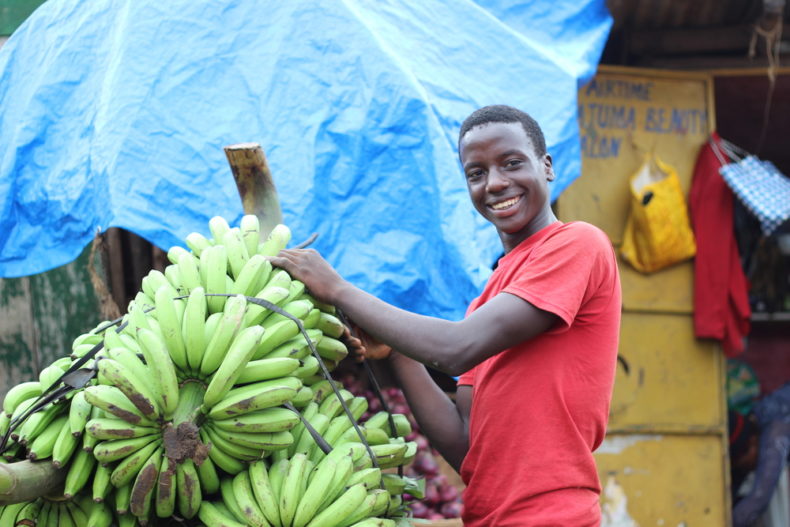Africa sits on a time bomb, waiting to explode for good or for ill. With a population estimated at 1,287,920,518 in 2018, a population density of 42.51, a growth rate of 2.52 percent and projected to rise to 1,703,537,504, a population density of 56.22 and a growth rate of 2.23 percent, by 2030, the continent of Africa will experience a sea change in demographics in the coming decade. Over this period ahead, one feature which might remain distinct is the proportion of the continent’s inhabitants that are in the youthful category.
As of 2017, Africa was regarded as the youngest continent in the world with about 60 percent of its population under 25 years. This, by comparison, is higher than Latin America’s 42 percent, Asia’s 40 percent, Oceania’s 38, North America’s 32 and Europe’s 27. In absolute numbers, therefore, Africa’s youthful population is greater than each of these continents except perhaps Asia and may continue to rise while China’s population shrinks and India’s reaches it plateau. The implications of these are many and varied.
Africa’s youthful population thus represents a huge potential resource to individual countries and to the continent if well harnessed, and a huge threat if improperly managed. Population growth in the youthful bracket increases pressure on the labour market as it creates opportunities for the consumer market. This places enormous responsibilities on policymakers, governments, regional and continental developmental organisations.
Americans realised this in the demographic shifts during the period between late 1940s and 1960s, which they regarded as an era of baby boom. Their response to this shift and the subsequent baby bust formed part of their strategies for what became an entrepreneurial economy, (spurring greater consumption of goods and demands for services) involving planning and strategies for public housing, transportation, education, health and public infrastructure, which laid a sound foundation for, and helped in boosting, the private economy, entrepreneurship and innovation.
The United Nations defines youth as people aged 15 to 24 years. The United Nation’s Population Fund estimates the global youth population at 1.05 billion. Today’s generation of young people – defined by the UN as those aged 15 to 24 – is the largest in history. In December 2009, the United Nations General Assembly adopted resolution 64/134 proclaiming an International Year of Youth from 12 August 2010 – 11 August 2011. This came at a time the issue of youths, globally, could no longer be ignored and when the need to harness the energy, imagination, an initiative of the world’s youth is becoming increasingly recognised as part of the overall strategy for overcoming the challenges facing humankind, enhancing peace and boosting economic development.
As at 2015, the youth in Africa constituted 19 percent of the global youth population, numbering 226 million, nearly a fifth of the estimated 1.1 billion, and is likely to increase by proportion in the future. By 2030, it is predicted that the number of youths in Africa will have increased by 42 percent. With population growth slowing down elsewhere in the world, Africa’s youthful population may supersede those of other continents and may define the future of the world. With 60 percent of the entire continent aged below 25, Africa’s population as a whole is considered the youngest in the world and fastest growing, in relation to its population makeup. It is claimed that all of the world’s top 10 youngest countries by median age are in Africa, with Niger Republic in first place having a median age of 15.1 years. But this category of people faces enormous challenges.
For instance, statistics from the International Labour Organisation (ILO) showed that, between 1997 and 2007, the ratio of youth-to-adult unemployment rose from 2:6 to 2:8; meaning that young people today are almost three times more likely to be unemployed than adults. This is in addition to the alarming realities, that the plight of the estimated 300 million young people classified as working poor is equally grave. They earn less than $2 a day, outnumber young unemployed people by a factor of 4 and typically work in rural areas.
Africa’s legendary pervasive poverty has a definitive impact on the youth. Whether the youthful population becomes an asset or a liability is a deliberate option. The crisis in the lack of formal skilled employment opportunities across Africa is exacerbated by the addition of 10 to 12 million youths to the labour market each year. This needs urgent attention to avoid a demographic dividend becoming a ‘ticking time bomb’ on one hand and to provide great potential for economic development.
Across Africa, the subject of youth unemployment still remains a nightmare. With an estimated 30.6 percent in North Africa as the second-highest rate of a region globally, the explanation for economic backwardness is not far-fetched. It is not comforting, either, that the sub-Saharan African rate declined to 12.9 percent in 2016. This is because wide variations from country to country.
From a 53.6 percent in Swaziland and 52.3 percent in South Africa to 3.3 percent in Rwanda in 2016, many countries are more hard-hit by the unemployment crisis than others. The levels of employment within the working population increase in direct proportion with age; and youths are three times more likely to be unemployed than adults (aged 25 or over), which demonstrates an anti-youth bias across African labour markets.
A lack of graduate employment opportunities across the continent has contributed towards high levels of informal employment, underemployment and unemployment across university graduates. It is estimated that 600,000 South African graduates are unable to find suitable employment, a figure which pales into insignificance when compared with Nigeria’s millions of unemployed graduates.
The consequences of failing to provide job opportunities for these young men and women can be far-reaching. Underemployed rural young people, particularly, become frustrated and idle because they have failed to find decent jobs after migrating to urban centres. In the absence of incentives to remain where they are, young women and men are leaving to seek opportunities elsewhere.
The failed migratory efforts across the desert through North Africa recently in search of greener pastures in Europe or elsewhere have created avenues for other crimes; the flourishing human trafficking trade in Sub-Saharan Africa has reached unprecedented levels.
Young people have power and persistence. In the right conditions, a substantial young generation offers countries a priceless resource for economic development and social progress. Africa thus has the potential for becoming the global powerhouse, from human resource perspective. To create limitless opportunities for the African youth, the time has therefore come to shift emphasis from wealth emanating from minerals to that emanating from the minds.
(to be continued in part 2)








